How Mobile Alerts Help Prevent Plant Disease Spread
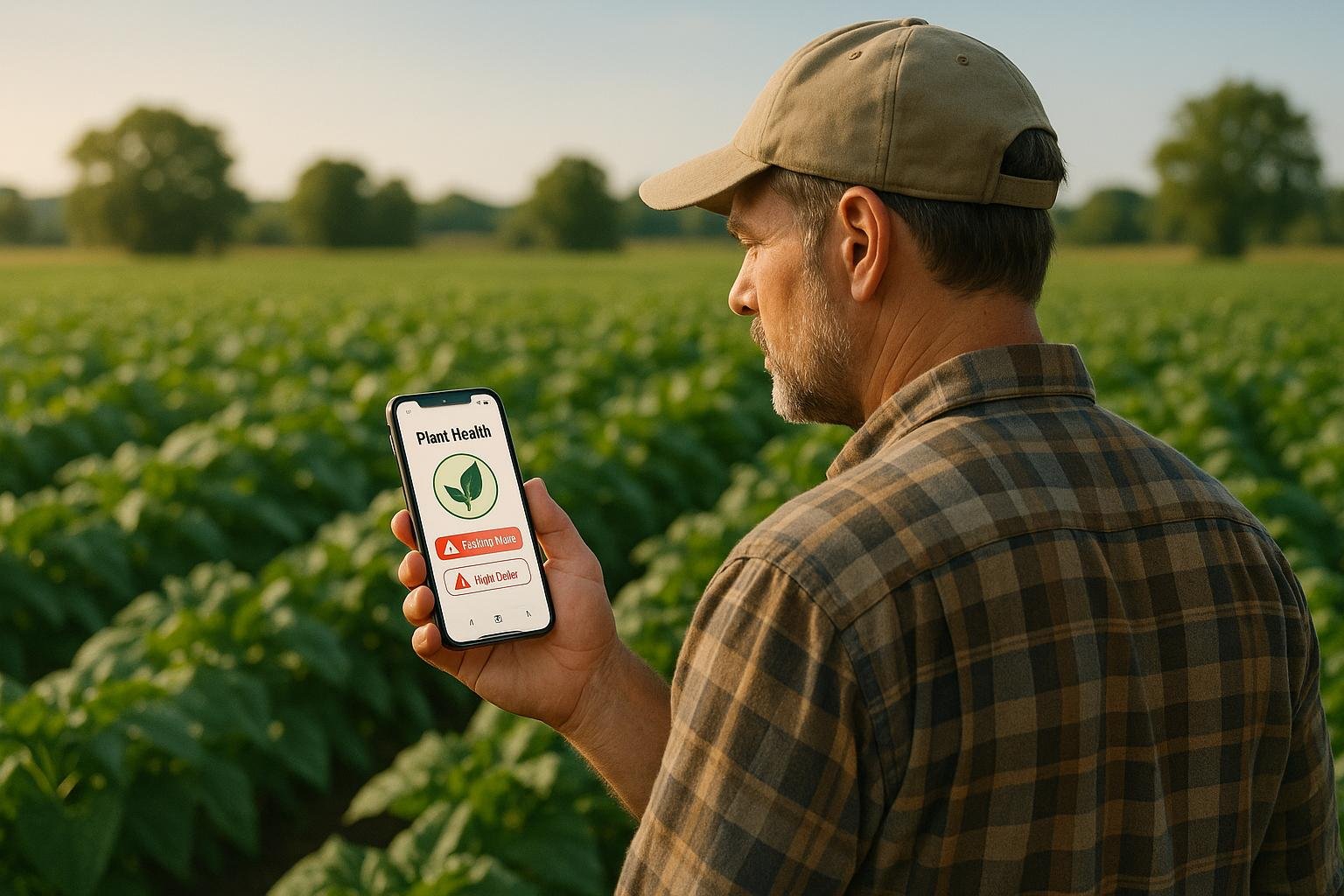
Mobile alert systems, paired with advanced sensors, are transforming how we detect and prevent plant diseases. These tools provide early warnings about risks like fungal outbreaks, pest activity, or unfavorable weather conditions. By identifying problems before symptoms appear, gardeners and farmers can save crops, reduce costs, and use fewer chemicals. Here's how it works:
- Real-Time Monitoring: Sensors track soil moisture, temperature, light, and more to spot early signs of disease.
- Types of Sensors: Tools like RGB imaging, thermal sensors, and biosensors detect stress, pathogens, and environmental risks.
- Mobile Integration: Data is sent to smartphones via apps, offering instant alerts and actionable recommendations.
- Custom Alerts: Notifications are tailored to local weather, soil conditions, and regional disease patterns.
This approach cuts disease rates by up to 60%, reduces water usage by 30–50%, and ensures precise treatments. AI tools like AIGardenPlanner go further by suggesting disease-resistant plants suited to your area and offering care tips.
Key takeaway: Mobile alerts give gardeners the tools to act fast, save money, and protect their plants with precision.
Nanosensor can alert a smartphone when plants are stressed

How Sensors Monitor Plant Health in Real-Time
Think of modern sensors as digital doctors for your garden. These devices monitor crucial parameters like soil moisture and temperature, helping to detect potential issues before any visible symptoms appear. Thanks to advancements in technology, today’s sensors can track multiple factors simultaneously, connect to the cloud, and even provide AI-driven recommendations[4]. This makes it easier for gardeners and farmers to spot early signs of disease. These innovations also pave the way for seamless integration with mobile monitoring systems, making plant care smarter and more efficient.
Types of Sensors for Disease Detection
A variety of sensors work together to catch plant diseases early, each with its own unique method of detection:
- Optical sensors: These go beyond visible light to pick up changes in plant physiology, such as shifts in tissue color, leaf shape, or transpiration rate. They can also detect how plants interact with solar radiation[1].
- RGB imaging sensors: Using digital cameras, these sensors capture high-resolution images to identify subtle color changes that might indicate stress or infection[1].
- Multispectral and hyperspectral sensors: These advanced tools measure light reflectance across multiple wavelengths. They’re used to assess plant health, monitor growth, detect stress or disease, and even predict crop yields based on unique spectral patterns[3].
- Thermal sensors: By using infrared thermography, these sensors measure plant temperature to detect water stress or early signs of pathogen activity[1].
- Fluorescence imaging sensors: These track chlorophyll fluorescence, offering a window into photosynthetic activity. This allows for early detection of issues at the cellular level[1].
- Electrochemical biosensors: Representing a cutting-edge approach, these sensors use nanoparticles to diagnose diseases with incredible sensitivity. For instance, a gold nanoparticle biosensor identified Phytophthora infestans (responsible for late blight in potatoes and tomatoes) with a detection limit of just 0.1 pg/ml of genomic DNA in 1.5 hours[2]. Another study showed these sensors could detect Pseudomonas syringae in only 10 minutes, with sensitivity 30 times higher than traditional methods[2].
- Environmental monitoring sensors: These gather data on factors like soil moisture, temperature, pH, humidity, light intensity, and wind speed. By identifying conditions that encourage disease development, they help prevent outbreaks[3][5].
With such a wide range of sensors monitoring various aspects of plant health, the next logical step is integrating all this data into mobile devices for immediate, actionable insights.
Connecting Sensors to Mobile Devices
The real power of modern plant sensors lies in their ability to provide real-time data directly to your smartphone or tablet. Wireless technologies like Bluetooth and WiFi enable these sensors to transmit measurements instantly, turning raw data into practical insights.
Mobile apps linked to these sensors let users access key plant health metrics - such as soil moisture, temperature, light levels, and nutrient content - right at their fingertips. Automated alerts notify gardeners when conditions change or when the sensors detect potential problems. For example, devices like the Gardena Smart Sensor can connect with home automation systems like Homey, enabling dynamic, automated plant care routines that adapt to real-time conditions[4].
Remote monitoring adds another layer of convenience, allowing users to address critical changes no matter where they are. These systems are also efficient: sensor-based setups have been shown to reduce water usage by 30–50% while keeping plants healthy[4].
Whether you’re working with a small backyard garden or a large-scale farm, these sensors can be deployed in various ways. From simple garden stakes to advanced setups on tractors, drones, aircraft, or even satellites, they ensure timely, precise data for better plant health management[1].
Mobile Alerts Turn Data Into Action
Sensor data becomes impactful when it’s transformed into actionable mobile alerts. These systems take complex measurements and turn them into real-time warnings, helping gardeners and farmers take quick action to prevent potential disease outbreaks.
"Smallholders or extension officers with a basic smartphone with a camera will be able to download the app for free, fire it up, point it at a leaf with disease symptoms and get an instant diagnosis. That is truly revolutionary!" - James Legg, International Institute of Tropical Agriculture (IITA) [8]
With proximal sensors achieving over 71% classification accuracy for early plant disease diagnosis [6], these alerts provide reliable information that can help significantly reduce crop losses.
Alert Types and When They Trigger
Mobile disease alert systems send out three main types of notifications, each designed to address specific threats to plant health before they escalate.
- Weather-based alerts: These trigger when environmental conditions, like humidity levels above 85% or temperatures favorable to fungal growth, create a high risk for disease development.
- Pathogen detection alerts: These activate when biosensors detect harmful organisms in soil or plant tissue, allowing gardeners to act before symptoms become visible.
- Pest activity alerts: These notify users when insect populations reach levels that increase the risk of disease transmission, encouraging preventive measures to stop the spread.
By offering real-time diagnoses and care recommendations, mobile applications can play a critical role in reducing crop damage [7]. Modern systems go a step further by tailoring these alerts to specific local conditions.
Location-Based Alert Customization
Gardening challenges differ greatly across the United States, from the humid Southeast to the arid Southwest. Modern alert systems use GPS and zip code data to customize notifications based on local climate, growing seasons, and common plant diseases.
For example, weather alerts can warn gardeners of frost, heat waves, or sudden temperature changes that may stress plants and make them more susceptible to disease [9][11]. A gardener in Phoenix will receive alerts tailored to the region's unique conditions, which will differ from those sent to someone in Portland.
AI-powered sensors enhance this precision by delivering real-time updates on water, light, and care needs, complete with recommendations for specific plant varieties in local growing conditions [10]. Users can also set personalized care schedules that adjust to their region’s seasonal patterns and common disease cycles.
These systems even factor in USDA hardiness zones and microclimates, considering details like elevation, nearby water sources, urban heat islands, and seasonal weather trends. Instead of relying on generic calendars, gardeners receive alerts based on real-world conditions - like soil temperature, humidity, and rainfall - that indicate when disease risks are high. This level of precision empowers gardeners to take timely and effective action to protect their plants.
sbb-itb-4d6a8dd
🚀 Ready to Reinvent Your Garden?
Join thousands of homeowners who have transformed their gardens using our AI design tool. Upload one photo to explore endless possibilities.
Get your AI garden designs →Benefits of Mobile Disease Alerts
Mobile disease alert systems are changing the game for gardeners, offering a smarter, faster, and more precise way to protect plants. These tools provide early warnings that can save money, reduce chemical use, and outperform traditional methods in both speed and accuracy.
Early Detection Saves Money
Catching plant diseases early through mobile alerts can cut disease rates by up to 60% [16]. This means gardeners can avoid expensive treatments, replacing plants, or losing entire crops. Considering that over 35% of productivity is lost annually due to plant diseases [13], these alerts are a cost-effective solution. They bring professional-level disease monitoring to everyone, including home gardeners, without breaking the bank [12].
Supporting Eco-Friendly Gardening
Mobile alerts make gardening more environmentally friendly by ensuring treatments are applied only when and where they're needed [16]. For instance, they can guide smart irrigation systems to reduce leaf wetness by up to 40%, significantly lowering the risk of fungal diseases compared to traditional watering methods [16]. Additionally, DNA-based diagnostics integrated with mobile alerts can identify specific pathogens and their resistance traits, ensuring treatments are both targeted and effective. Modern AI-driven apps can even recognize plant diseases with up to 98% accuracy [16], giving gardeners confidence to use precise, minimal interventions.
Traditional Methods vs. Mobile Alerts
Traditional methods of monitoring plants, like visual inspections, often rely on experience and can be slow and subjective. Many gardeners lack the expertise to spot early symptoms, and hiring professionals for continuous monitoring can be expensive and impractical [12]. Mobile alert systems, on the other hand, offer real-time monitoring and can process massive amounts of data instantly. For example, while a human expert might check a garden once a week, mobile apps provide 24/7 surveillance and automated alerts. AI-powered systems can analyze thousands of images daily, saving both time and money compared to manual inspections [15].
| Aspect | Traditional Methods | Mobile Alert Systems |
|---|---|---|
| Detection Speed | Days to weeks after symptoms appear | Real-time alerts before symptoms develop |
| Accuracy | Subjective, prone to human error | Up to 98% accuracy with AI identification |
| Cost | Requires expert consultation | Low-cost, automated monitoring |
| Availability | Limited by expert availability | 24/7 continuous monitoring |
| Treatment Timing | Often after disease establishment | Enables preventive action before spread |
With automated mobile monitoring, gardeners gain access to professional-grade disease management at a fraction of the cost [14]. These tools are paving the way for even more advanced AI-driven garden management in the future.
AIGardenPlanner: AI Tools for Disease Prevention
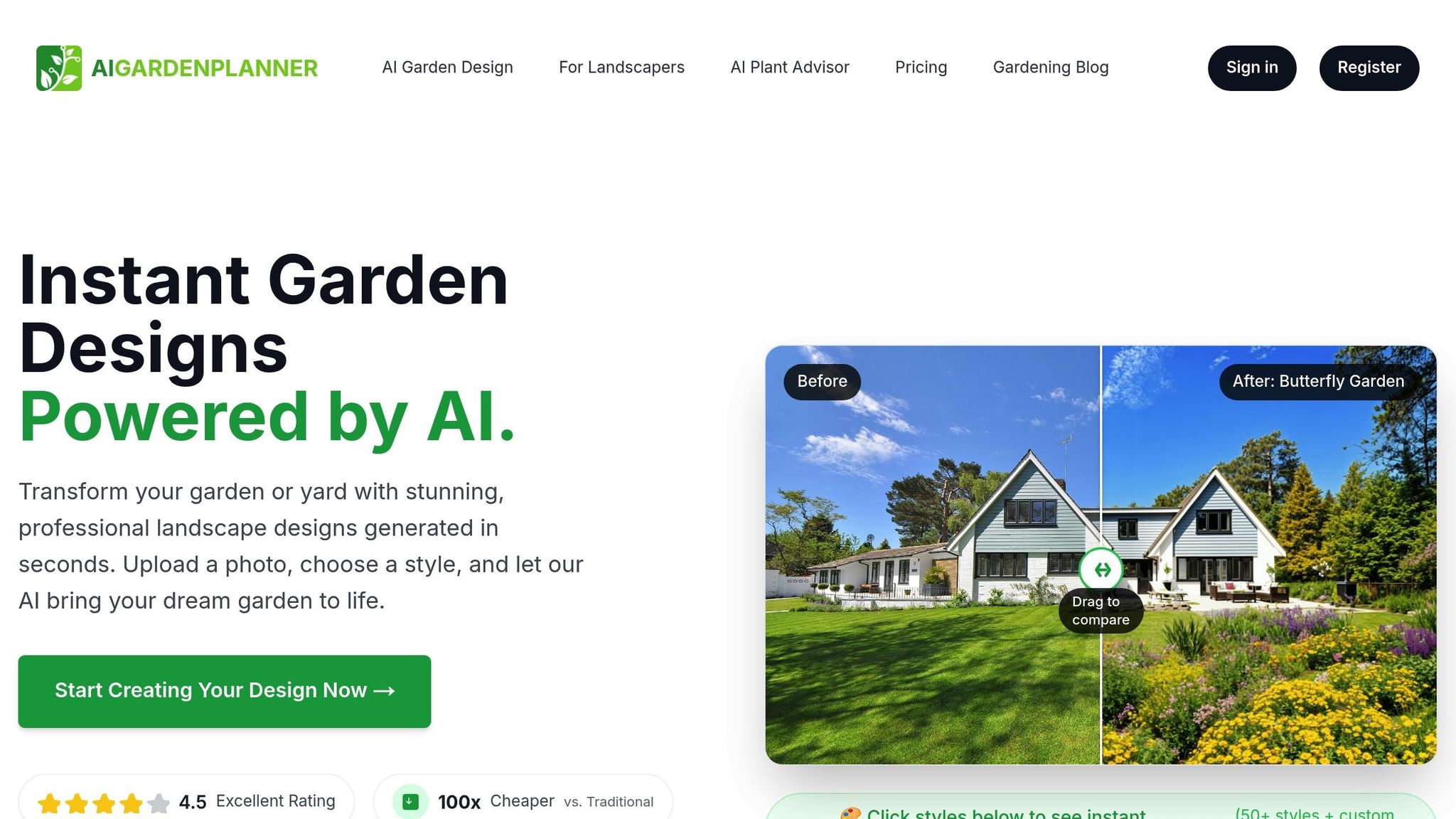
AIGardenPlanner takes gardening to the next level by using AI to create disease-resistant landscapes. While mobile alerts help you act on sensor data in real time, this platform goes a step further. It analyzes your location, climate, and soil conditions to recommend plants that are naturally less prone to diseases, making your garden healthier from the start.
AI Plant Recommendations for Your Area
The AI Plant Advisor in AIGardenPlanner crafts personalized garden plans tailored to your specific climate zone, soil type, and local weather patterns [17]. Within minutes, the system provides detailed recommendations, focusing on plants that are less likely to fall victim to diseases common in your area [18].
For instance, in humid southeastern regions where fungal issues like powdery mildew and black spot are common, the AI suggests plants with natural defenses against these problems. In arid climates, it prioritizes drought-tolerant species that are less vulnerable to infections. Simply input your location and garden details, and the platform cross-references this data with regional disease trends, seasonal weather, and plant compatibility to create a robust planting strategy [19].
But it doesn't stop there. The platform's pest and disease detection feature uses satellite imagery and user-uploaded photos to spot potential issues early [19]. With the ability to identify over 50 plant diseases at up to 95% accuracy, this tool gives gardeners a significant advantage [19][20].
AI-Powered Garden Management Tools
AIGardenPlanner doesn’t just help you choose the right plants - it also equips you with tools for ongoing garden care. From planting advice to pest and disease management, the platform offers a suite of features designed to keep your garden thriving [18].
Some highlights include:
- Custom irrigation schedules and real-time soil moisture tracking to promote efficient water use [19].
- Drought stress prediction to help prevent water-related issues.
- Diagnostic tools that differentiate between nutrient deficiencies and actual diseases, saving you from unnecessary treatments [20].
The platform also provides detailed planting instructions, covering everything from sunlight and water needs to spacing. These guidelines help you design layouts that improve air circulation and reduce humidity, cutting down the chances of disease spreading.
For accurate results, make sure to upload clear, well-lit photos from multiple angles. Include details like the date, symptoms, and AI suggestions to build a comprehensive record [20].
Cost-Effective Solutions for Gardeners
AIGardenPlanner not only enhances plant health but also offers affordable options for users. For example, the Pay As You Go plan costs $15 for 15 AI-generated garden designs, while the Pro plan costs $21 per month (billed annually at $249) and includes 200 designs per month along with full access to the AI Plant Advisor [17].
Conclusion: Technology Creates Healthier Gardens
Advancements like mobile alert systems and AI-driven garden planning are reshaping how plant diseases are managed across the U.S. These tools allow gardeners to act quickly - sometimes even before symptoms emerge - helping to cut disease rates by as much as 60%. Micro-climate monitors offer a vital 3- to 5-day window to take preventative measures, while predictive analytics can anticipate outbreaks with an impressive 85% accuracy[16].
AI tools such as AIGardenPlanner take this a step further by analyzing local conditions to suggest plants that are more resistant to diseases. On top of that, its disease identification feature boasts a 98% accuracy rate in diagnosing plant problems[16].
These innovations are more than just tools - they’re leveling the playing field in plant care. By making expert-level disease prevention accessible to everyone, they empower gardeners of all skill levels to protect their plants. Smart irrigation systems also contribute by cutting leaf wetness duration by up to 40%, while AI-based water management slashes water waste by up to 50%[16][21]. Together, these technologies are transforming individual gardens and redefining what’s possible in plant care.
FAQs
How can mobile alerts and sensors help stop plant diseases before they appear?
Mobile alerts and sensors team up to keep a close eye on your garden's conditions, tracking factors like humidity, temperature, and soil moisture levels. These sensors are so precise that they can pick up on small changes signaling the early onset of plant diseases - often before you notice any visible signs.
Once an issue is identified, the system immediately sends a mobile alert, giving you the chance to act fast. Whether it’s tweaking your watering schedule, increasing airflow, or applying a treatment, this quick response can safeguard your plants and stop diseases from spreading. In the end, it saves you both time and effort while keeping your garden thriving.
What types of sensors are best for detecting plant diseases, and how do they work?
Sensors are game-changers when it comes to spotting plant diseases early, giving gardeners the chance to step in before things get out of hand. Here are some of the most effective types:
- Optical sensors: Tools like RGB imaging, hyperspectral sensors, and thermography analyze light reflectance, temperature shifts, or chlorophyll fluorescence to detect signs of disease.
- DNA-based sensors and VOC (volatile organic compound) sensor arrays: These focus on identifying biochemical markers or specific pathogen signatures tied to plant illnesses.
By picking up on physical, chemical, or molecular signals that hint at potential issues, these sensors provide early alerts. This allows gardeners to act promptly, preventing the spread of disease and minimizing plant loss.
How can mobile alert systems help address specific climate and disease challenges in my area?
Mobile alert systems can be fine-tuned to tackle the specific climate and disease challenges in your area by leveraging local weather data and disease prediction models. These systems keep an eye on critical factors like temperature, humidity, and precipitation, and send alerts when conditions are ripe for disease outbreaks. For instance, you might get a notification if extended periods of high humidity create conditions ideal for fungal diseases to spread.
By setting thresholds tailored to your region’s climate and common plant diseases, these alerts help gardeners act quickly. Whether it’s adjusting watering schedules or applying preventive treatments, this timely response can safeguard plants. This kind of system is particularly helpful in regions with unpredictable weather or extreme climate shifts.
🎨 Visualize Your Dream Garden Today!
Transform any outdoor space into a professional landscape design in minutes. Just upload a photo, choose your style, and let our AI do the rest.
Start your garden transformation now →Related posts
Related Articles
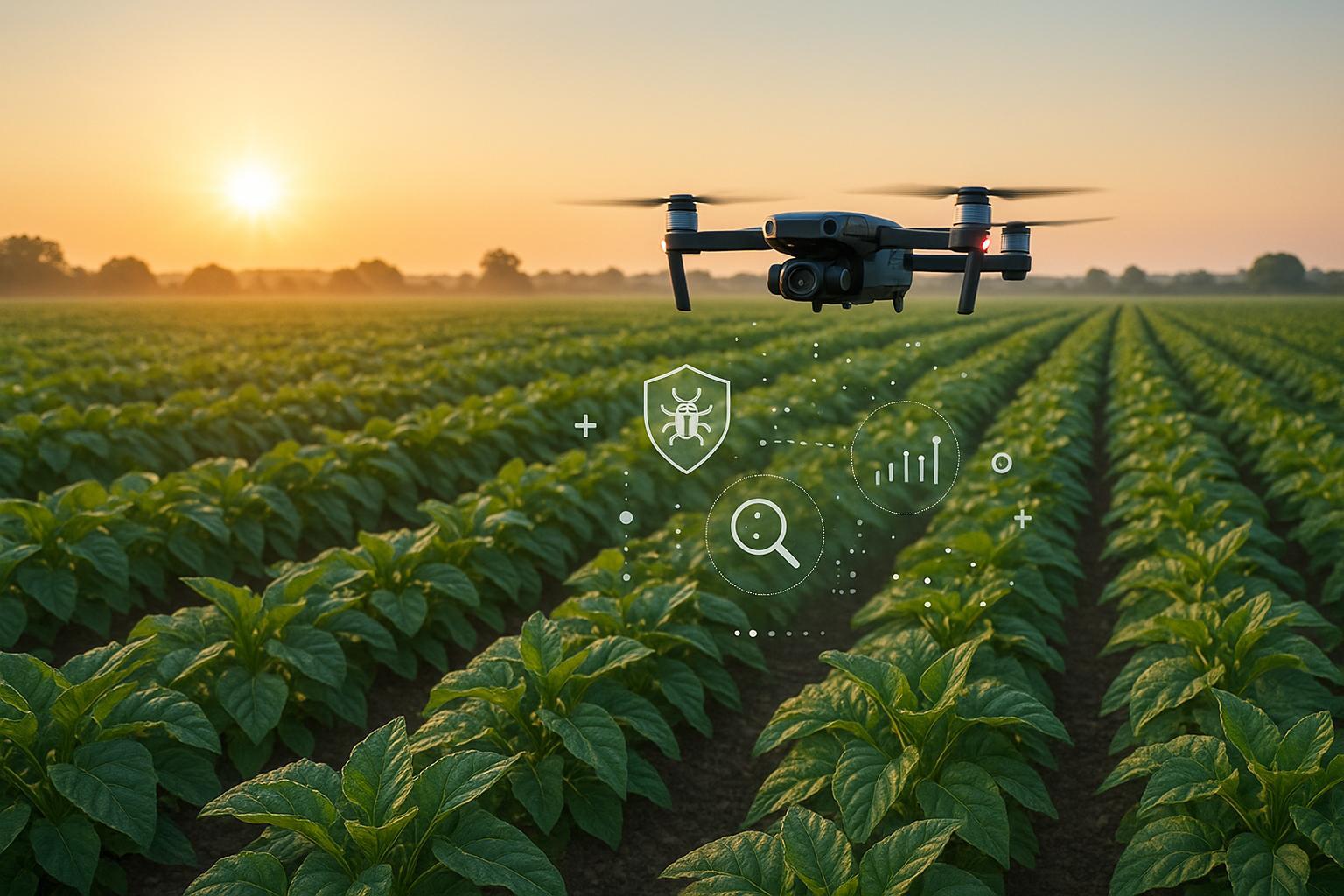
AI Pest Detection: How Early Warnings Work
Explore how AI pest detection revolutionizes agriculture by providing early warnings, reducing crop damage, and promoting eco-friendly pest management.

Free Online Landscape Design Tools: A Comprehensive Guide
Explore the world of landscape design free and learn about the key factors involved in creating visually appealing outdoor spaces. Discover the benefits of utilizing free online landscape design tools and DIY tips for stunning designs.
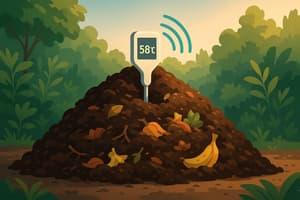
How AI Monitors Compost Temperature
AI streamlines composting by automating temperature monitoring, enhancing decomposition, and reducing manual effort for better compost quality.
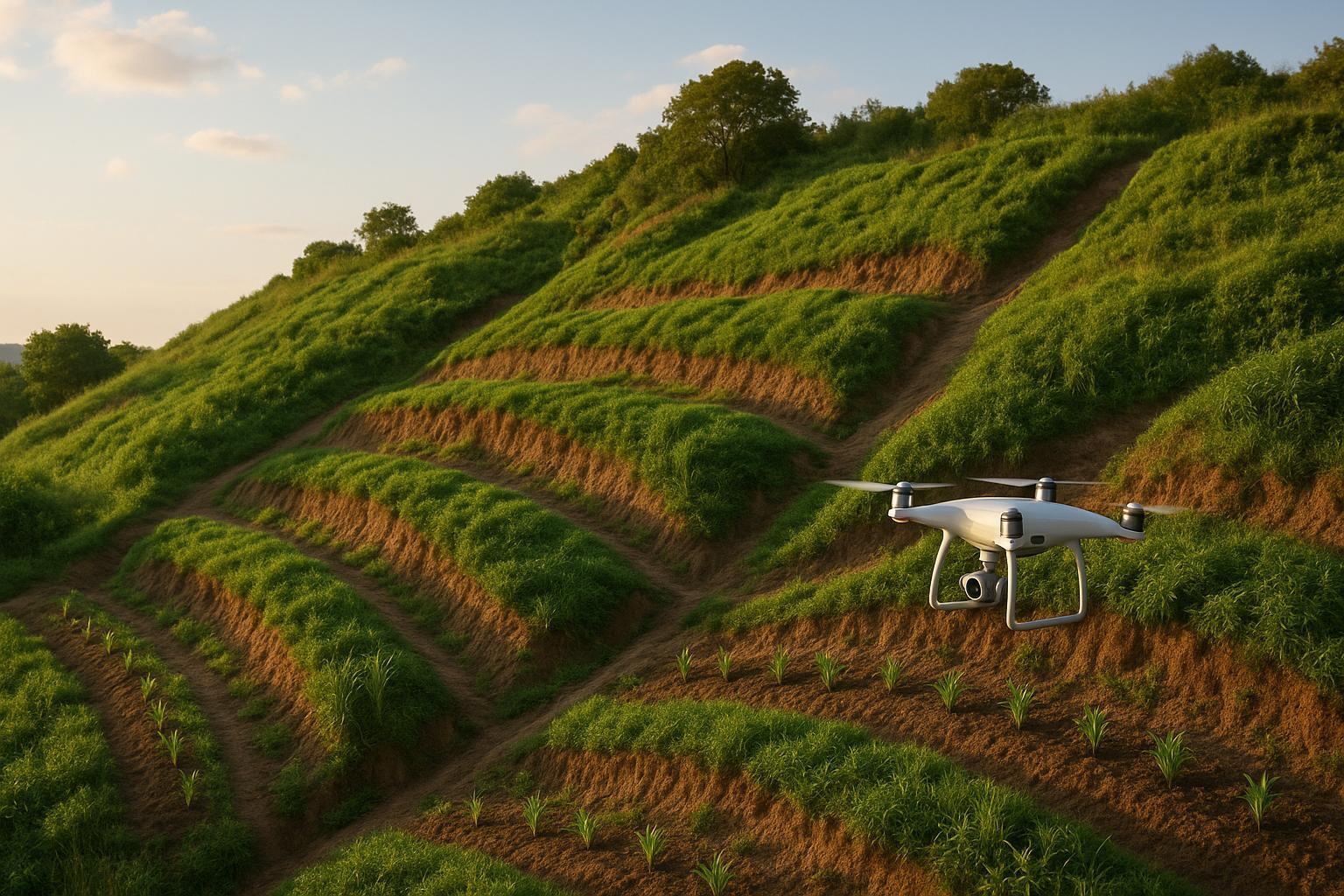
AI Tools for Soil Erosion Control
Explore how AI tools are revolutionizing soil erosion control with real-time monitoring, mapping, and tailored strategies for effective land management.
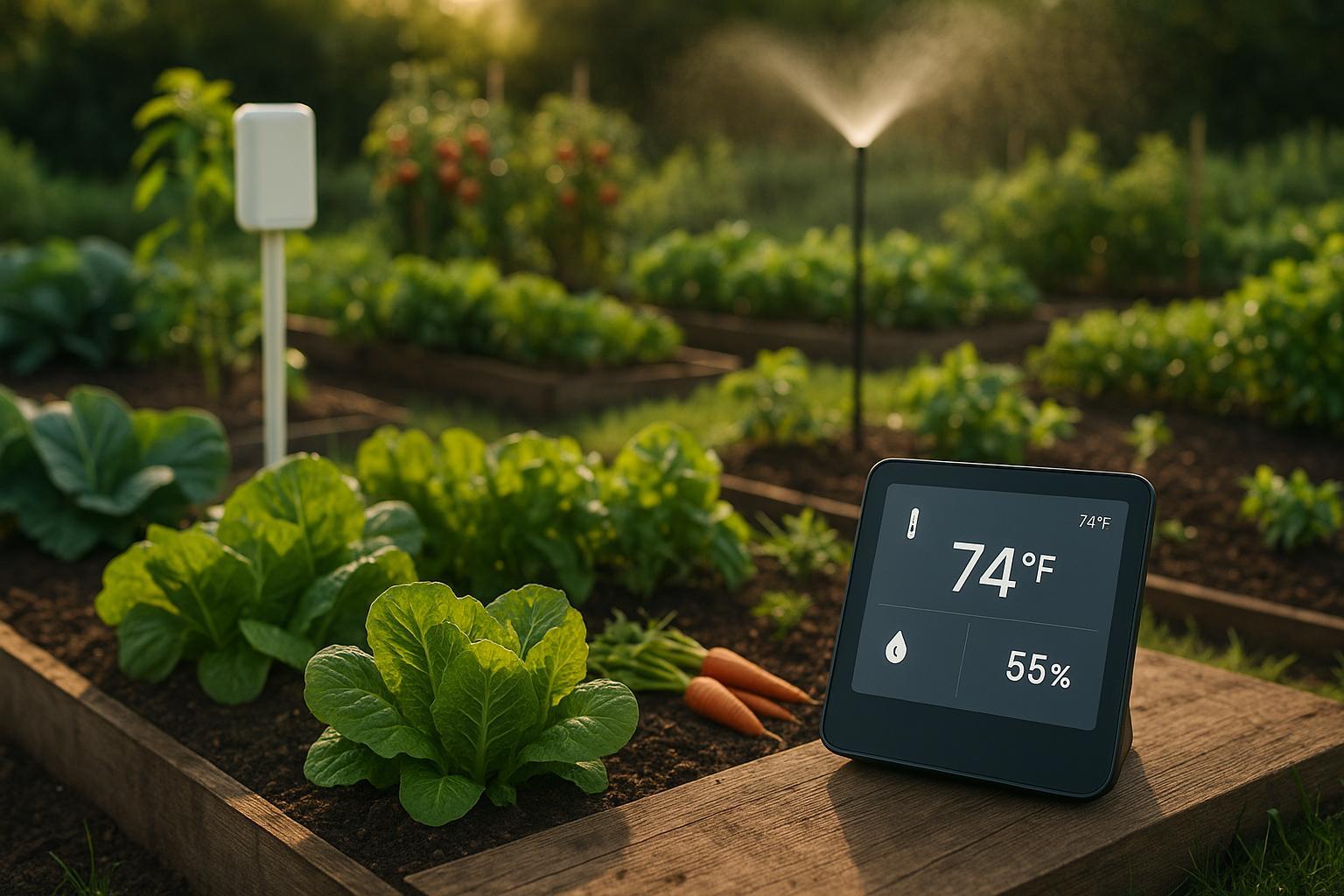
How Remote Climate Control Boosts Garden Productivity
Explore how remote climate control systems enhance garden productivity through automation, yielding higher returns and resource efficiency.
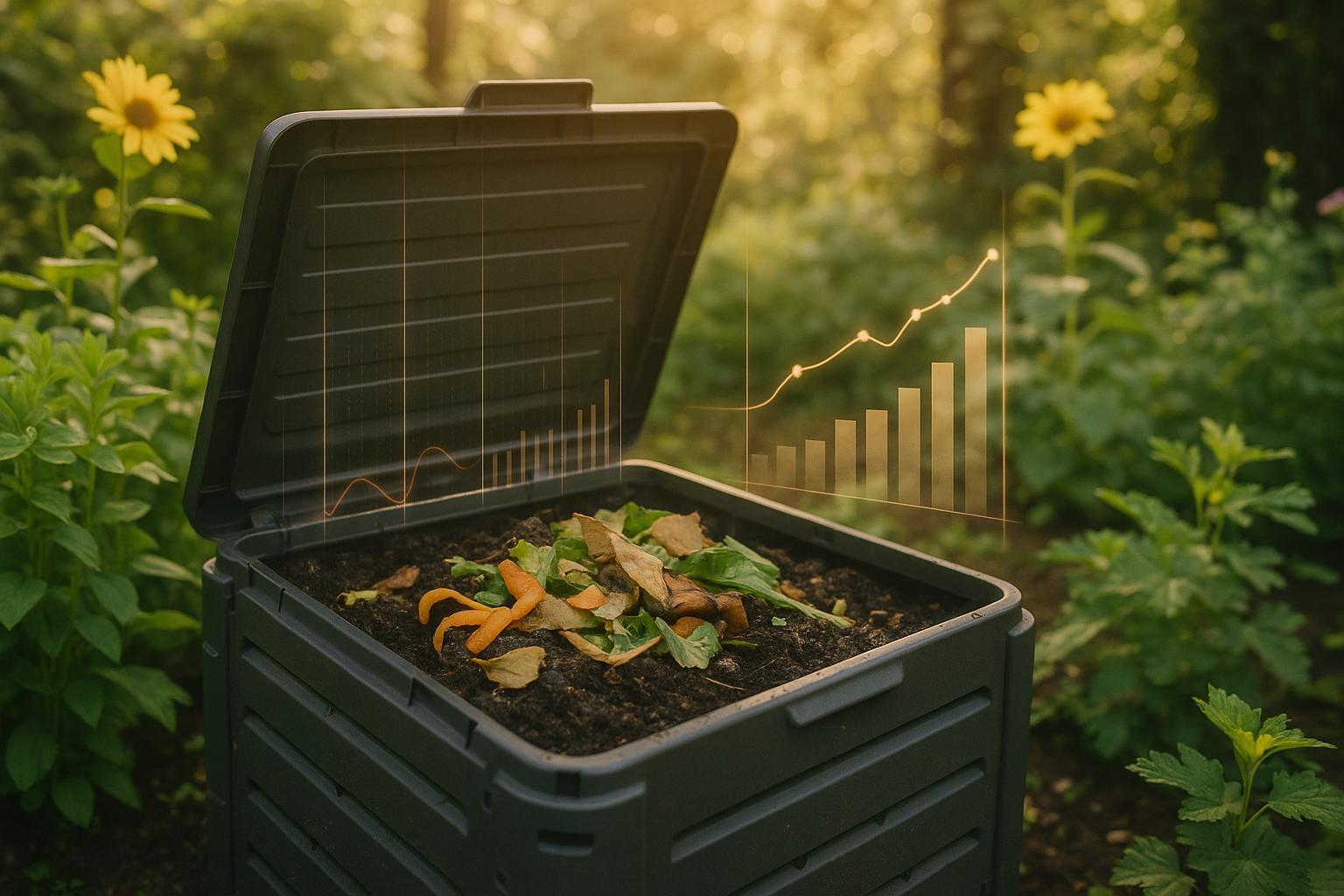
AI Models for Compost Decomposition Rates
Explore how AI models are revolutionizing composting by enhancing efficiency, reducing costs, and improving compost quality through real-time monitoring and predictions.